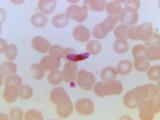Feb 28, 2012
WHO confirms 2 Egyptian H5N1 deaths
Egypt's Ministry of Health and Population has confirmed that a man and woman have died of H5N1 avian flu, the World Health Organization (WHO) reported today. The man, 32, from Beheira governorate, fell ill Feb 16, was admitted to a hospital Feb 21 and immediately received oseltamivir (Tamiflu), and died today. The woman, 37, from Kafr el-Sheikh governorate, became ill Feb 18, received oseltamivir upon hospital admission on Feb 23, and died Feb 26. Investigations into the cases revealed that both patients had close contact with sick or dead poultry at home. The cases were confirmed by the Central Public Health Laboratories, a National Influenza Center of the WHO Global Influenza Surveillance Network. They bring the country's total H5N1 cases this year to five, of which only these two have been fatal. Since 2005, Egypt has confirmed 163 cases, 57 of which were fatal. The global WHO H5N1 case count now stands at 589 cases, including 348 deaths.
Feb 28 WHO update
Observational studies yield limited evidence for benefits of main flu drugs
A new review of observational studies suggests that the two main influenza drugs, oral oseltamivir (Tamiflu) and inhaled zanamivir (Relenza), may be beneficial, but the quality of the evidence was deemed low. A large international team examined observational studies because reviews of randomized controlled trials have suggested a lack of evidence for the effects of antiviral treatment on flu outcomes, says the report in Annals of Internal Medicine. Scouring several databases, the authors found 74 studies that fit their criteria. For oseltamivir, meta-analyses of the few studies that adjusted for confounders suggest that in high-risk patients, treatment may reduce mortality (odds ratio [OR], 0.23; 95% confidence interval [CI], 0.13 to 0.43) , hospitalizations (OR, 0.75; 95% CI, 0.66 to 0.89), and duration of symptoms (33 hours, 95% CI, 21 to 45 hours)—but the quality of the evidence was termed "very low." Earlier treatment was generally linked to better outcomes. For zanamivir, the authors found "moderate-quality evidence" that treatment shortens symptoms by 23 hours (95% CI, 17 to 28 hours), but the drug yielded only a nonsignificant decrease in hospitalizations (OR, 0.66; 95% CI, 0.37 to 1.18). Studies that directly compared the two drugs suggested there were no important differences in key outcomes, the report says. The authors say the drugs may provide net benefits, but, "as with the randomized trials, the confidence in the estimates of the effects for decision making is low to very low." They call for high-quality randomized trials, which they say will require preparedness and collaboration among large organizations.
Feb 27 Ann Intern Med study
Related Jan 19 CIDRAP News story
Meta-analysis finds rapid flu tests useful but have limitations
A meta-analysis of studies comparing the performance of rapid influenza diagnostic tests (RIDTs) with more definitive tests such as reverse-transcriptase polymerase chain reaction (RT-PCR) found that RIDTs are useful for confirming flu, but not for ruling it out. The findings from a Canadian and Dutch research team appeared yesterday in Annals of Internal Medicine. Their review included 159 studies that compared RIDTs with RT-PCR or viral culture. They also found that the tests were more accurate in children than in adults and that RIDTs were better at detecting influenza A than influenza B. Dr Madhukar Pai, study coauthor and professor at McGill University's department of epidemiology, said in a press release that with 25 RIDTs on the market, a meta-analysis was needed to help healthcare providers interpret the large amount of studies that have been published. "So many papers have been published, especially since the H1N1 pandemic, but no one had synthesized this body of literature into one single cohesive piece," he said. "Our hope is that this work will help in informing future guidelines on the use of these tests."
Feb 27 Ann Intern Med abstract
Survey shows malaria in 1 of 4 Nigerian children
A 2010 survey of malaria in Nigerian children revealed that 4 in 10 had evidence of malaria parasites, AllAfrica news reported today. The study was conducted by the National Malaria Control Program (NMCP), and the findings were released in Abuja yesterday. The survey included 6,197 households, targeting children ages 6 to 59 months. Disease prevalence increased with age and decreased with family income level, and malaria infections were twice as common in rural children than in urban kids. Disease levels were highest in the southwestern zone, where the survey identified the lowest use of insecticide-treated bed nets, according to the report. Chioma Amajoh, who heads the NMCP, said the report confirms Nigeria's disease burden but shows areas to address. "The targets are feasible, doable, and achievable. The greatest resource we need is commitment."
Feb 28 AllAfrica news story




















